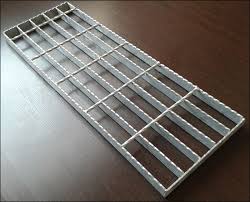When it comes to compact utility vehicles, few have achieved the same level of engineering finesse as the Subaru Sambar Kei Truck. Designed with precision and purpose, the Sambar represents decades of Subaru’s commitment to innovation, efficiency, and practicality. From its inception in the early 1960s to the modern iterations that continue to serve farmers, tradesmen, and enthusiasts alike, the Subaru Sambar Kei Truck stands as a model of how to extract maximum performance and usability from minimal resources.
Subaru’s approach to efficiency was never limited to just fuel consumption. The brand’s engineers worked meticulously to optimize space, handling, and power delivery—creating a small truck that feels far larger in capability than its modest dimensions suggest. Understanding how Subaru perfected efficiency with the Sambar provides insight into both Japan’s automotive philosophy and Subaru’s engineering mastery.
Origins: A Compact Vision for a Growing Market
When Subaru introduced the Sambar in 1961, the Japanese auto industry was transforming rapidly. The government encouraged automakers to produce Kei-class vehicles—lightweight, fuel-efficient models designed for the country’s narrow streets and modest postwar economy. Subaru recognized a niche opportunity to create a mini truck that could handle both personal and commercial use while maintaining low ownership costs.
The Subaru Sambar Kei Truck was built on the foundation of the Subaru 360, sharing its rear-engine, rear-wheel-drive layout. This setup was not only economical to produce but also ideal for weight distribution and traction, particularly on uneven terrain. The first Sambar quickly gained a reputation for reliability and agility, establishing Subaru’s credibility in the commercial vehicle segment.
Engineering for Maximum Utility in Minimal Space
Efficiency begins with intelligent design, and the Subaru Sambar Kei Truck is a perfect embodiment of this philosophy. Despite its compact footprint, the Sambar maximized cabin and cargo space through clever engineering. The cab-over layout—where the driver sits above the front axle—allowed for a longer cargo bed without increasing the overall vehicle length. This configuration made it ideal for urban deliveries and agricultural work, where maneuverability and space utilization were crucial.
The flatbed was designed with low loading height, making it easy to carry heavy equipment or produce. Subaru engineers also ensured the suspension system could handle significant payloads while maintaining ride comfort—a rare balance in small utility vehicles. These design principles made the Sambar not just a tool but an efficient partner for a wide range of professional needs.
The Boxer Engine Advantage
Subaru’s signature engineering contribution to the automotive world is its horizontally opposed “boxer” engine, and this technology played a crucial role in the evolution of the Subaru Sambar Kei Truck. The use of a boxer engine—where pistons move horizontally in opposite directions—offers unique advantages: lower center of gravity, reduced vibration, and compact design.
By placing this compact yet balanced engine under the cargo area, Subaru achieved remarkable space efficiency. The flat engine layout also improved handling stability, which made the Sambar surprisingly nimble even on tight corners and rough terrain. This innovation allowed Subaru to differentiate the Sambar from other Kei trucks, which typically used upright inline engines that compromised balance and cargo height.
Furthermore, the boxer engine’s inherent balance meant smoother operation and better long-term reliability. Efficiency was not just about fuel economy but also about minimizing mechanical strain and maintenance costs—an important factor for business owners relying on their vehicles daily.
Fuel Efficiency and Environmental Considerations
Over the decades, Subaru continued refining the Sambar’s powertrain to enhance fuel economy and reduce emissions. As fuel prices rose and environmental awareness grew, Subaru introduced incremental improvements to the carburetion, ignition systems, and later, electronic fuel injection.
By the time the fourth and fifth generations rolled out in the 1980s and 1990s, the Subaru Sambar Kei Truck had become one of the most fuel-efficient vehicles in its class. Some models could achieve impressive mileage figures even by modern standards, making them a smart choice for users who valued both performance and economy.
When Japan’s emissions regulations tightened, Subaru responded with cleaner-burning engines and catalytic converters without sacrificing power or utility. This commitment to eco-friendly design reflected Subaru’s broader philosophy of responsible engineering—a trait that continues to define the brand today.
Four-Wheel Drive and All-Terrain Efficiency
Subaru’s expertise in all-wheel drive (AWD) technology also found its way into the Sambar lineup. While the early models were rear-wheel drive, Subaru introduced 4WD variants in the late 1970s, transforming the Sambar into a capable all-terrain mini truck. This was a game-changer for farmers, construction workers, and outdoor enthusiasts who needed reliable traction in diverse conditions.
The 4WD system, combined with the Sambar’s light weight and balanced chassis, made it incredibly efficient off-road. Drivers could navigate muddy fields, snow-covered paths, or steep inclines without overworking the engine or consuming excessive fuel. Subaru’s innovative drivetrain allowed users to enjoy the benefits of an off-road-capable vehicle in a compact and economical form.
This development also showcased Subaru’s ability to repurpose its advanced technologies—originally designed for passenger cars—into practical commercial applications. The Sambar thus became an ambassador of Subaru’s “efficient innovation” ethos, blending capability with conservation.
Aerodynamic Refinements and Urban Functionality
As the Subaru Sambar Kei Truck evolved, Subaru refined its aerodynamics and ergonomics to enhance performance in urban environments. Later models featured smoother body lines, integrated headlights, and reduced wind resistance—all contributing to better fuel economy at higher speeds.
The compact design also made the Sambar a favorite among city businesses. It could fit into tight parking spots, maneuver through narrow alleys, and still carry a substantial payload. These traits made it one of the most efficient delivery and service vehicles in dense metropolitan areas across Japan and beyond.
Subaru even introduced variants like the Sambar Dias, which emphasized passenger comfort while maintaining the same efficiency and maneuverability. This flexibility demonstrated how a single efficient platform could serve multiple purposes with minimal modification.
Durability and Longevity as a Form of Efficiency
True efficiency isn’t just about saving fuel—it’s also about lasting value. The Subaru Sambar Kei Truck was built to endure, with a sturdy frame, reliable drivetrain, and easy-to-service components. Owners frequently report their Sambars lasting decades with proper maintenance, a testament to Subaru’s engineering precision.
This durability translates into lifecycle efficiency. A vehicle that can remain operational for 20 or 30 years reduces waste, minimizes replacement costs, and sustains its utility over time. Subaru’s focus on quality materials and robust engineering ensures that the Sambar remains a practical investment long after its competitors have faded.
Global Appeal and Continuing Legacy
Although the Subaru Sambar Kei Truck was primarily designed for Japan’s domestic market, it eventually found fans worldwide. In recent years, import enthusiasts have brought these compact workhorses to North America, Europe, and Australia, appreciating their unique combination of style, practicality, and efficiency.
Collectors and small business owners alike value the Sambar for its reliability, distinctive character, and enduring charm. Even decades after production, its efficient design continues to inspire admiration among those who understand the beauty of purposeful engineering.
Conclusion: Efficiency as an Art Form
Subaru’s achievement with the Sambar lies in its holistic approach to efficiency. The brand didn’t focus solely on one aspect—fuel economy, weight, or size—but instead optimized every element of design and performance to create a vehicle that worked seamlessly in harmony.
The Subaru Sambar Kei Truck represents a rare blend of innovation, utility, and economy that has stood the test of time. Whether hauling cargo through rural Japan, navigating urban streets, or serving as a collectible symbol of smart engineering, the Sambar exemplifies how Subaru perfected efficiency not just through technology, but through thoughtful design and an unwavering commitment to purpose.
In the story of small trucks, the Subaru Sambar remains a giant of ingenuity—proof that true efficiency is achieved not by cutting corners, but by mastering every detail.




